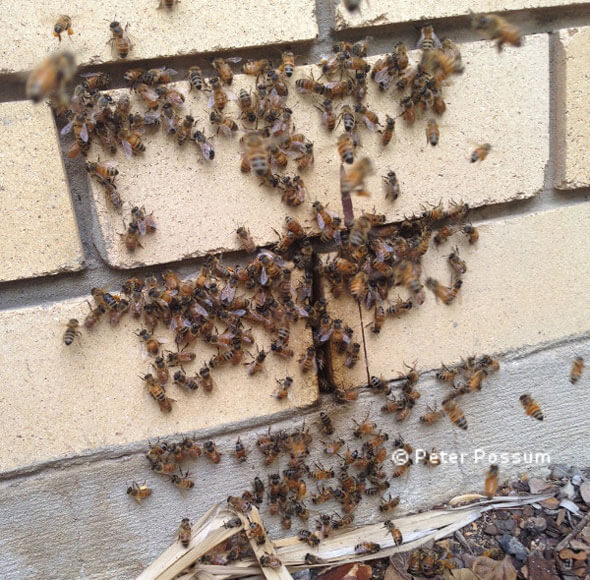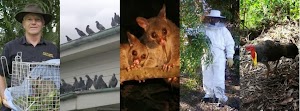All bees have the potential to “attack and sting” at will, but there actually is a difference between your local honey-producing hives and “feral” bees that have left a managed hive to live “in the wild”.

What is a feral bee?
Let’s start with the definition of the word feral: in a wild state, especially after escape from captivity or domestication.
So, feral bees were once blissfully domesticated honey bees but have now gone into the wild (or into your tree or yard) and survive without any help from a human “bee keeper”.
The most common feral honey bees in Australia originated from the European honey bee (Apis mellifera) as they were introduced in Western Australia to pollinate the plants of early settlers over 180 years ago.
These honey bees were kept in carefully managed hives to create honey and help propagate commercial food crops.
Soon, these introduced bee species started to compete with our native bees for resources, as well as competing for space in tree hollows, pushing out other native birds and animals, such as black cockatoos, other parrots and possums.
Escapees from managed bee hives across Australia, have created the wild colonies of feral bees that we see today; their often-aggressive behaviour is worse during the hot summer months as they search for cold water to cool down their hives.
At times, these feral bees form swarms in new locations while they seek a new hive. Unfortunately, sometimes these new hives may be within your home or in a hollow tree near your property.
You should never try to rid yourself of a beehive in your yard or neighbourhood because bees are naturally protective of their hive and will sting to protect their Queen. Therefore, it is always best to call in professional bee removalist to ensure you are not stung and to remove these rogue, feral bees from your property.







